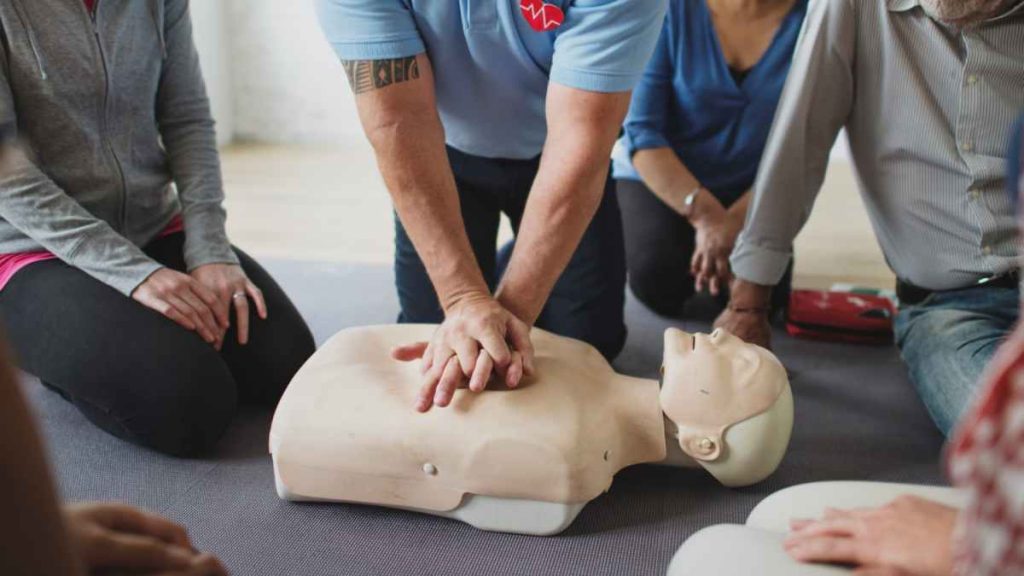With each day, medical science brings a new method to save lives. New technology, better analysis, and dedication from the fraternity bring about these changes. No one can negate the importance of first-aid training classes. Their impact on keeping people safe has proven helpful in the past years. Out of all the first aid techniques, CPR has changed in the past decade. The new method ensures an effective tactic that puts the system out of danger first. Read the article below to understand why CPR is essential to every person. It also talks about the importance of the new technique and its delivery method.
Sudden Cardiac Arrest Stats in America
The nervous system sends signals to every organ and muscle to perform their tasks in the human body. The medical industry identifies a Cardiac arrest as the result of a lack of impulse from the brain. This impulse typically pushes the heart muscles to contract and circulate blood in the body. The heart should beat to pump pure and impure blood. Just like the electric circuit of a house, your body also has a nervous system grid. The muscle stops working when a blockage in the grid goes to the heart. It may come as a shock that the 2022 Heart and Strokes Statistics mentioned a whopping number of people suffering from cardiac arrest. The American Heart Association reports about 350,000 people suffer from cardiac arrest. This report includes bystanders and everyday individuals. There is a separate report that talks about in-hospital cardiac arrest statistics.
Cardiac arrest is an enemy of the public in the United States of America. The country reports the majority of deaths in 2022 were due to this disease. The report is more traumatizing because 90% of these cases end in death. This data means thousands of people do not make it to the hospital, and those who do end up brain dead. A sharp rise in Out of Hospital Cardiac Arrest patients in New York points toward unhealthy lifestyles. Many cases show previous signs of infection with the COVID -19 virus. Another report states that lay responders administered CPR in 40% of cases, saving lives. This data shows the importance of first-aid training classes for people of all ages.
What is the C-A-B Method in CPR?
Cardiopulmonary resuscitation helps the body with enough oxygen to keep the organs alive. A patient’s body needs CPR to ensure they reach a hospital. Take a look at the working mechanism of CPR. The first aider tries to mimic the heart muscles through systematically delivered chest compressions. This action maintains the blood flow as usual. It keeps the deoxygenated blood from pooling in the organs. This action also sends the freshly oxygenated blood to them, ensuring they work fine. The air pushed through the patient’s mouth acts as oxygen. It gives the lungs something to purify the blood with. The below points highlight the details of the CAB method used in CPR.
- C – Compression: As opposed to the old theory, first aiders must first deliver compressions. You first check for a heartbeat and start with 120 chest compressions a minute with both palms. This approach emphasizes letting oxygenated blood travel through the body. This process keeps the brain and other organs alive.
- A – Airway: In the second step, you must tilt the patient’s head back and ensure their airway stays clear. Check for obstructions and remove any if possible.
- B – Breathing: Once you deliver the compressions for two minutes, blow two bouts of breath into the patient’s mouth while pinching their nose. After this step, you must return to the first one and repeat the compressions.
First aid training classes after 2010 teach the CAB method. Experts found it more effective than the older ABC. This new method does not delay the blood flow, allowing the body more time to stay alive.
Why should you handle an emergency with the CAB method instead of ABC?
As a first aider, handling emergencies will soon become your first priority. However, you must stay attentive and identify a cardiac arrest as quickly as possible. As the first step, make sure the patient knows of your presence. Calm them down and call the Emergency Medical Team. If you are a CPR practitioner, ensure you deliver it via the CAB method. Lay the person down on their back, preferably on a flat surface. Do not start by tilting the head back to deliver air. Firstly focus on the heartbeat and begin with the chest compressions. As discussed above, it will help with stored blood circulation. If you first start blowing in the air, you may lose time. It results in the patient reaching the hospital brain dead. Once the human body loses brain activity, chances of survival diminish drastically.
Secondly, you should open the airway and check for obstructions. This step ensures your efforts of blowing air will be well-spent. Checking for obstructions could also help if the patient has something stuck in their nostrils. Thirdly, blow the air into their mouth and repeat the first step. The ABC method talks about compression as the last step and clearing the airway as the first. Handle every emergency with the CAB method. It helps in the recovery of the patient faster than the ABC method.
Conclusion
If you have taken First aid training classes recently, you will learn the CAB method. This process makes scientific sense and works better. The human body always has oxygenated blood to the heart. Therefore you should not waste precious seconds. You must always remain calm and reassure the patient with positive words. If you know the patient, talk to them and guide them through the process. Healing words can work miracles sometimes, as familiar voices make all the difference in times of need. The American HealthCare Academy has the latest courses for you. Register on the website and refresh your old CPR certification with the new method.




